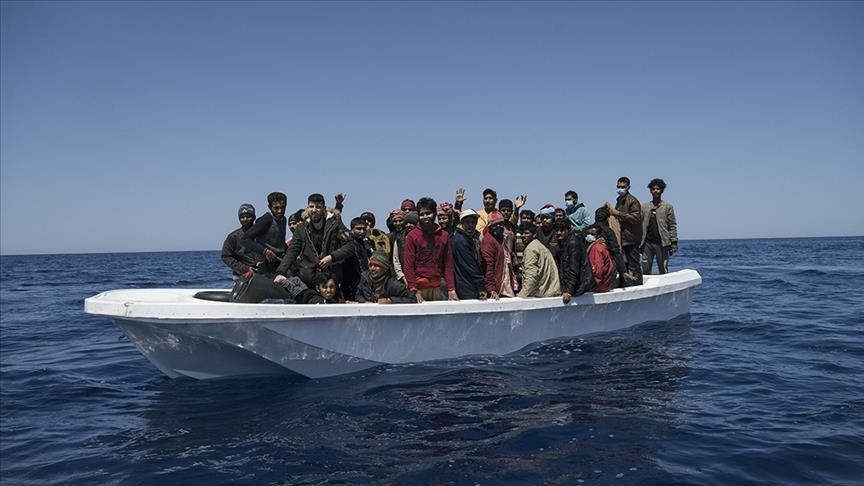ISTANBUL
It was until the 19th century that people were sold as slaves by traders. Today, “slavery” is no longer legal but continues as “modern slavery,” with millions of people worldwide, mostly women and girls, being trafficked and used for profit.
Roughly 25 million people are victims of human trafficking worldwide, according to the “2021 Trafficking in Persons Report” by the US State Department, published this month.
World Day Against Trafficking in Persons is marked every year on July 30 to raise awareness of this serious global problem.
The situation has worsened over the recent years due to the pandemic, according to the United Nations Office on Drugs and Crime (UNODC) ‘s annual report based on data and information collected from 148 countries.
The economic recession due to the COVID-19 will make people more vulnerable to human traffickers, UNODC said in its 2020 Global Report on Trafficking in Persons.
Women, children being exploited for sexual purposes
According to the report, women and girls make up seven out of ten victims of human traffickers globally. In 2018, 46% of the trafficking persons were women, while 19% were girls.
One in every three victims are children, including 15% boys, while 20% of the victims were adult men.
Sex trafficking is the most common type of human trafficking among girls, while boys are mostly the victims of forced labor, the figures suggest.
Forced labor, child recruitment
50% of the overall victims were trafficked for sexual exploitation, while 38% were trafficked for forced labor, according to the UNODC figures as of 2018.
Trafficking for forced criminal activity is also among the types of human trafficking globally, with 6% being exploited for the commission of a crime, including pickpocketing or drug trafficking.
Child recruitment by terrorist or extremist groups is also a common form of human trafficking.
The US State Department’s “Trafficking in Persons” report revealed this month that children remain vulnerable to forcible recruitment and use by multiple armed groups operating in Iraq, including Daesh/ISIS, PKK, and Iran backed-militias.
Different regions, different figures
The types of human trafficking vary across regions. For instance, the UN report says, children are mainly trafficked for “forced labor” in low-income countries, while in high-income countries, they are mainly trafficked for “sexual exploitation, forced criminality or begging.”
As an example of children in forced labor, the report mentioned children being worked on plantations, in mines, or on farms in Sub-Saharan Africa, the children working in brick kilns, hotels, the garment industry, and agriculture in South Asia, and the children being worked on South American plantations.
According to the International Labour Organization (ILO), one out of five children between the ages of 5-17 in Africa are in labor.
Child victims of trafficking for sexual exploitation are mostly concentrated in Central America and the Caribbean, and East Asia, the UN report added.
In Europe and North America, children are trafficked mostly for sexual exploitation, while forced labor makes up roughly 1% of overall victims, although the report adds: “In higher income countries, child trafficking is generally less detected.”
Migrants most vulnerable
The most vulnerable group to the human traffickers are undocumented migrants, who are, the UN says, “in desperate need of employment” and are profited with “forced labor.”
Migrants constitute the largest share of the victims in most regions, such as 65% in Western and Southern Europe, 60% in the Middle East, 55% in East Asia and the Pacific, and 50% in Central and South-Eastern Europe, and 25% in North America.
Profile of human traffickers
Meanwhile, males make up two-thirds of human traffickers convicted globally, however, the situation is different in Eastern Europe and Central Asia, where more women than men are convicted for trafficking.
The UN figure also reveals that the convicted human traffickers are mostly from the country they were sentenced to other than being foreigners.
Human traffickers use the internet and especially social media to reach their victims, with the UNODC report identifying two types of the trafficker’s strategy as “hunting” and “fishing.”
The tech Transparency Project (TTP) ‘s report was released last week on Tuesday, saying that human smugglers approach migrants through social media, especially via Facebook and WhatsApp. The study was based on interviews with 200 migrants at both the Mexico-Guatemala border and the U.S.-Mexico border.
When it comes to the conviction rate of traffickers, there is still room for optimism.
“More traffickers are being convicted every year since 2003 when the Protocol to Prevent, Suppress and Punish Trafficking in Persons, Especially Women and Children (UN Trafficking in Persons Protocol) entered into force,” the UNODC said in the report, adding that conviction rate has nearly tripled since 2003.

